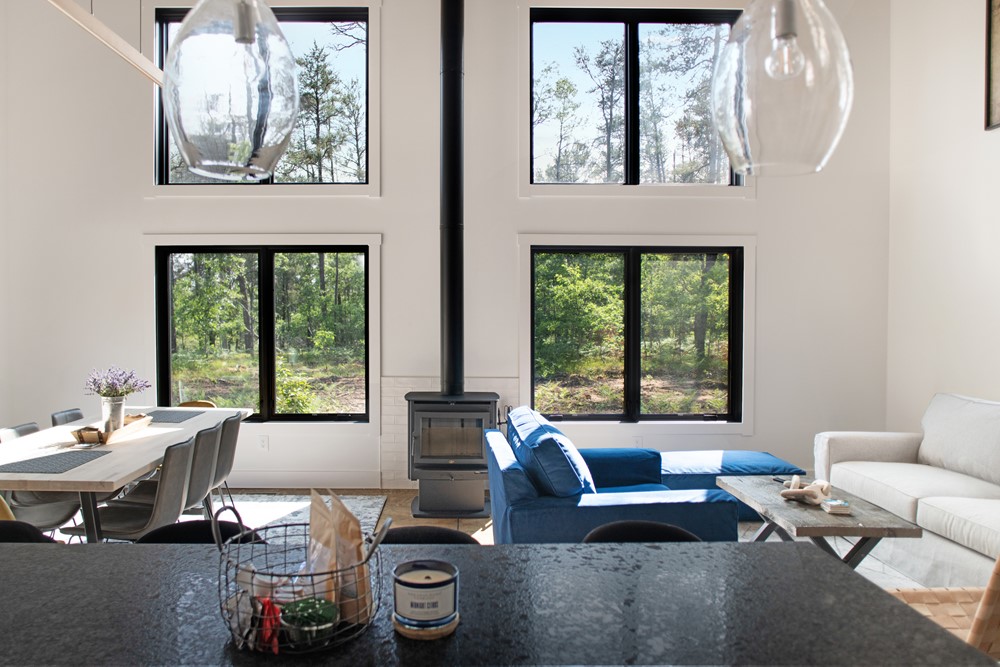The Uncommon Ranch is a project designed by design with FRANK, a Sustainable Farm Dwelling built in 7 days!. For many, COVID-19 served as a catalyst to reconsider our relationships with our homes. Michelle and Christian took a bold step, transitioning from Chicago’s urban life to Grayling, Michigan’s forest dunes. Christian inherited property there, and over the years, the couple expanded their holdings by an impressive 200 acres—their vision: The Uncommon Ranch. Photography by Chloe Fan, Gabriel Munnich.

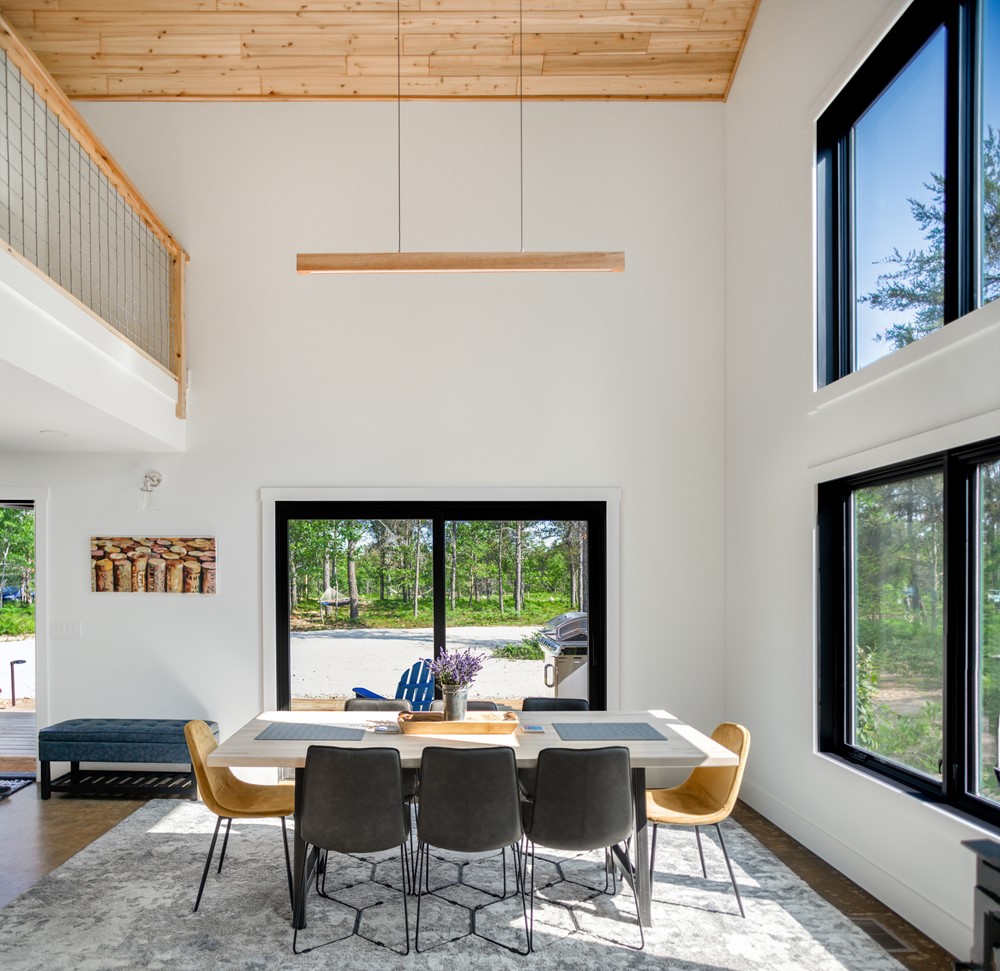




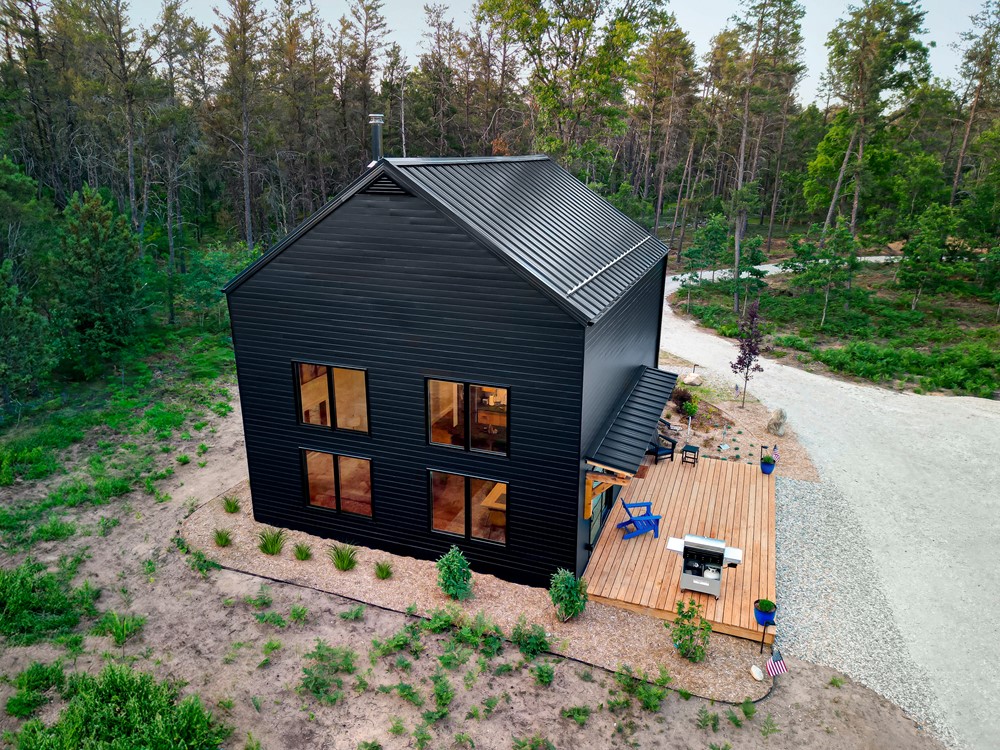


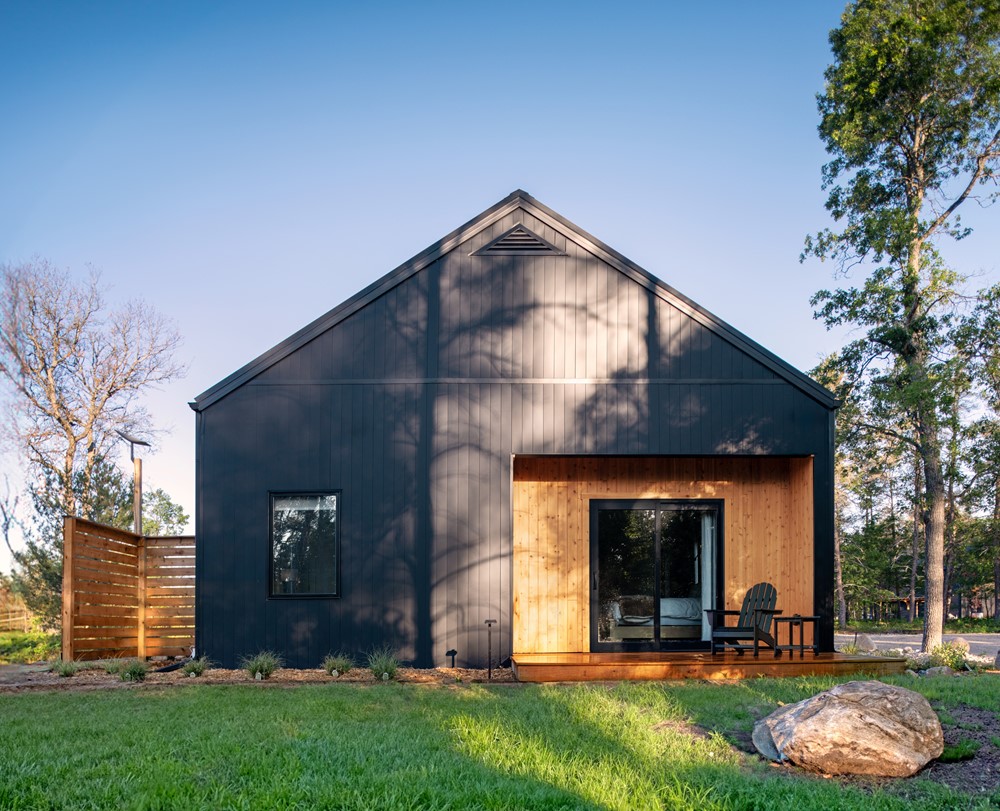
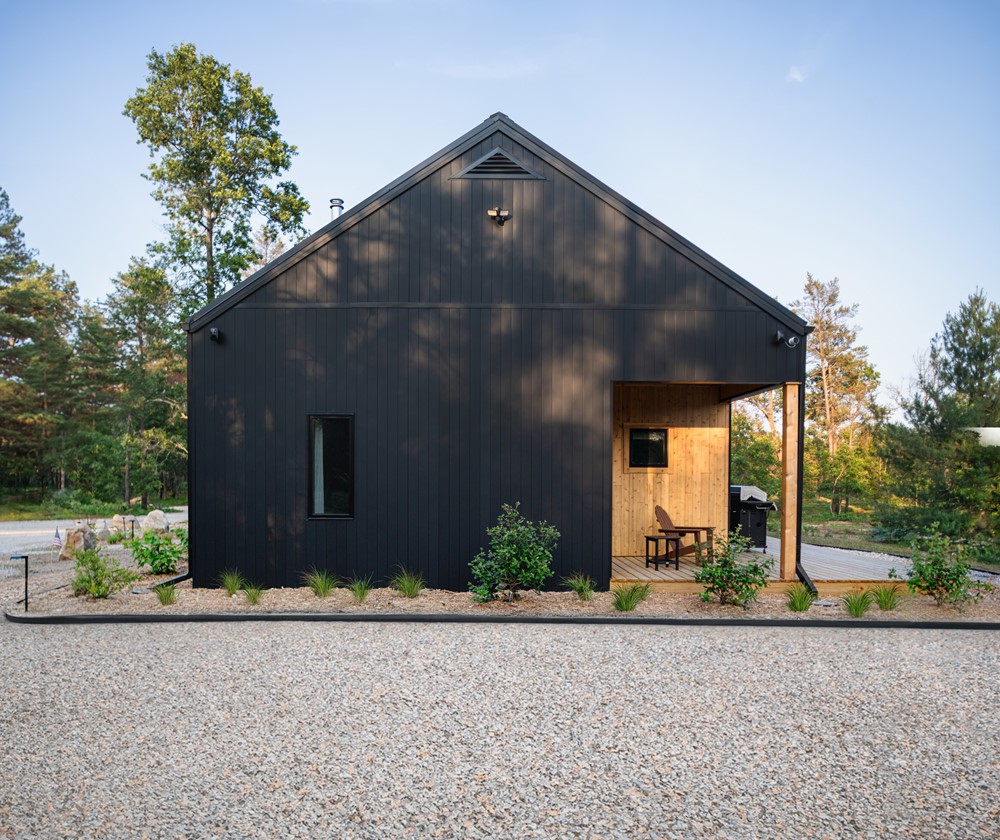
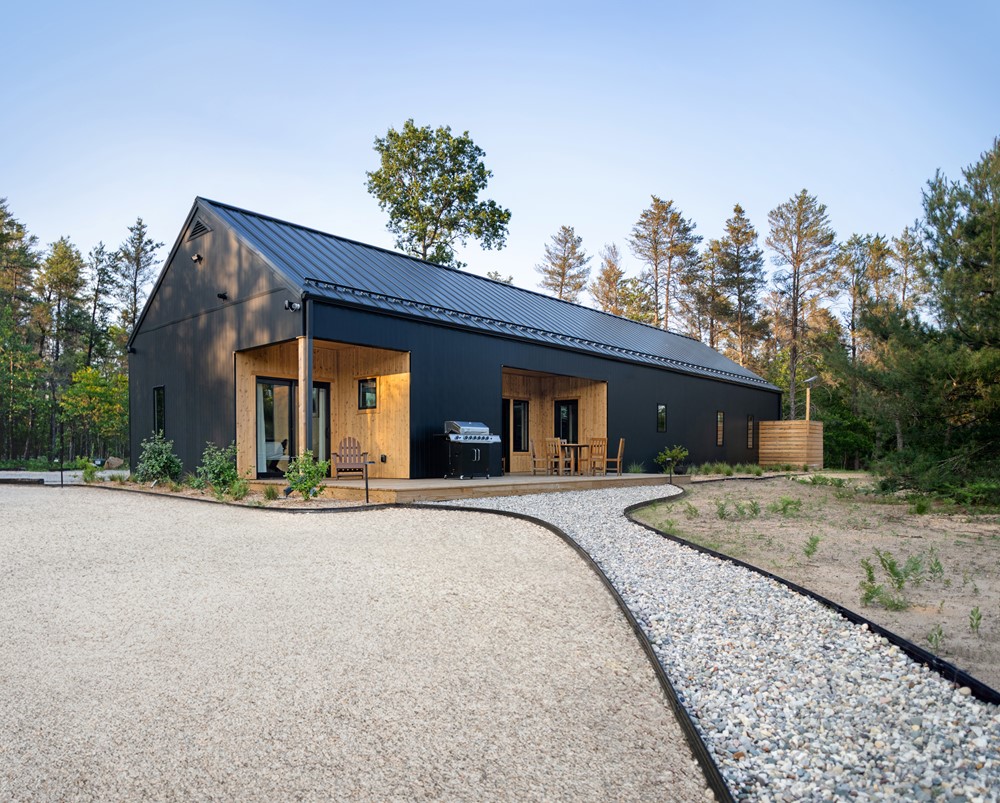









During the initial phases of bringing The Uncommon Ranch to life, Michelle and Christian approached us, “Design with FRANK”, in late 2021. Michelle dreamt of The Uncommon Ranch as a sanctuary for lavender farming, inviting travelers and becoming a central hub for crafting lavender oils and products. Beyond a serene relaxation spot, the Ranch would serve as a micro-organic farm catering to local eateries. Michelle had a grand blueprint for the entire property, and our role was to craft designs for two vacation homes that mark the architectural pieces of the land.
The site is in Roscommon, a quaint town in the heart of Michigan, flanked by expansive forests and a nearby state park. From an aerial view, the vast stretches of trees resemble green oceans, with houses appearing as islands amid the dense woods. The town has a rich history of log home construction but was experiencing a labor shortage at that time. Given the absence of builders specializing in modern-style houses in the area, the owners, Michelle and Christian, decided to construct their homes themselves with the help of locals.
Our collaboration led to the design of two distinctive properties: the Black Barn House, a 3-bedroom single-story residence, and the avant-garde Lavender Loft Cabin. Michelle wanted these homes to accommodate diverse travelers: families, couples, groups of friends, and guests across all age brackets.
The design of the house draws inspiration from a fusion of two cultural styles: the classic American Barn house and the Scandinavian Modern dwelling concept. While integrating architectural elements from both styles, we also embedded a series of passive design principles into the house’s structure. Given the property’s proximity to the state park, we designed the home with various sustainable passive systems to minimize energy consumption. Furthermore, the layout promotes outdoor living, allowing residents to connect deeply with the surrounding environment.
The Black Barn House is a three-bedroom structure, flanked by bedrooms on either side and anchored by a central living space. The living room features a recessed covered patio, artfully carved from the building’s overall mass. This patio is also designed using sun-shading principles, ensuring the living room is shielded from direct summer heat while offering a shaded outdoor living area. All windows are strategically positioned to promote passive ventilation. Furthermore, the primary bedroom uniquely integrates the recessed patio design, enabling residents to enjoy an outdoor morning routine without inviting excessive heat into the interior.
The Lavender Loft Cabin, the other property, is meticulously designed to have a minimal footprint while optimizing sunlight penetration from the surrounding woods. Spanning 800 sqft, the cabin houses the living, dining, and kitchen areas on the ground floor, with the two bedrooms situated on the upper level. The double-height window in the living and dining area ensures that ample sunlight from the woods illuminates the cabin’s interior. Despite its compact design, the cabin boasts striking architectural features, including the dramatic double-height spaces that enhance the gathering areas. Impressively, each bedroom comfortably accommodates two queen-sized beds.
The design was constructed through modular design software developed by the co-founder, Gabriel Munnich. The clients could create a layout by themselves with 3D design intelligence and see a visual tour immediately.
The building process also needed DIY-friendly, as the clients, Michelle and Christian, intended to play a significant role in building their homes, albeit with some assistance from local hands. When designing, we employed a prefab wall system, SIP, an acronym for Structural Insulated Panels, which combines insulation, structural elements, and prefabricated roof trusses. The design team works with the panel’s system and modular architecture. The houses arrived in a kit of panels, trusses, and a series of prefab elements. With the help of local laborers, both houses were roofed within a mere seven days!


